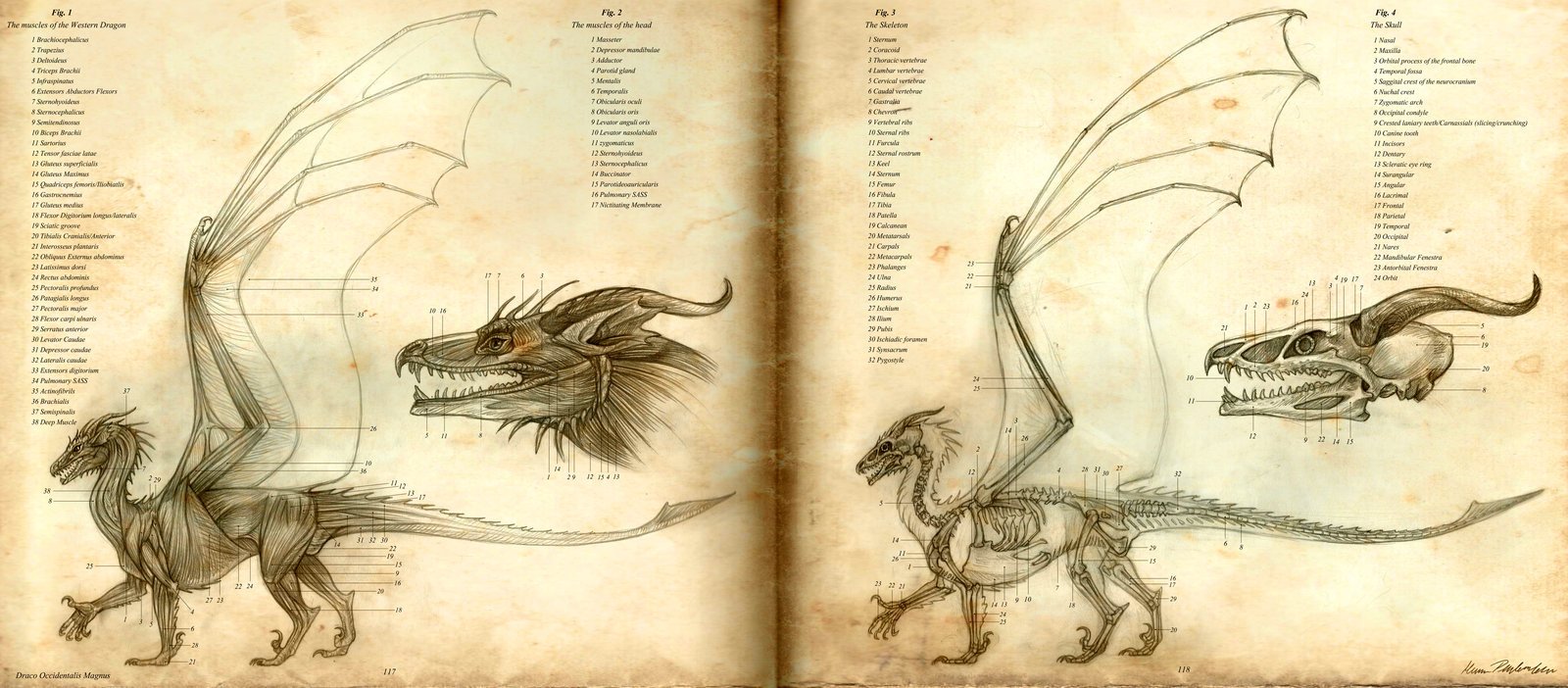
Classic Dragons are homeothermic reptiles.
Homeothermy is a thermoregulation process which maintains a stable internal body temperature regardless of external influence. A warm-blooded creature, the Dragon’s body temperature is controlled internally.
This characteristic enables Dracks to adapt to so many diverse climates upon a largely extensive habitat. Dragon maintains activities both day and night throughout the year, not being dependent on the warmth from the Sun like all other reptiles. The dragon generally has wings, and his bones are hollow, for lightness.

It is important to note that the bones of a dragon are hollow, thus greatly reducing the bones mass (and weight, correspondingly).
Dragon physiology is formidable and ideal to fly very well and at great speed.
The scales are pentagonal, and shaped like a teardrop, with two long sides and two shorter ones, and a very short fifth side attached to the skin.
The dragon can make them stand on end whenever he likes to preen them.
Remember, the dragon is a very clean creature and takes great care always to keep his skin and scales clean and immaculate.
